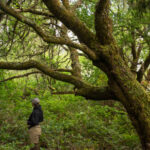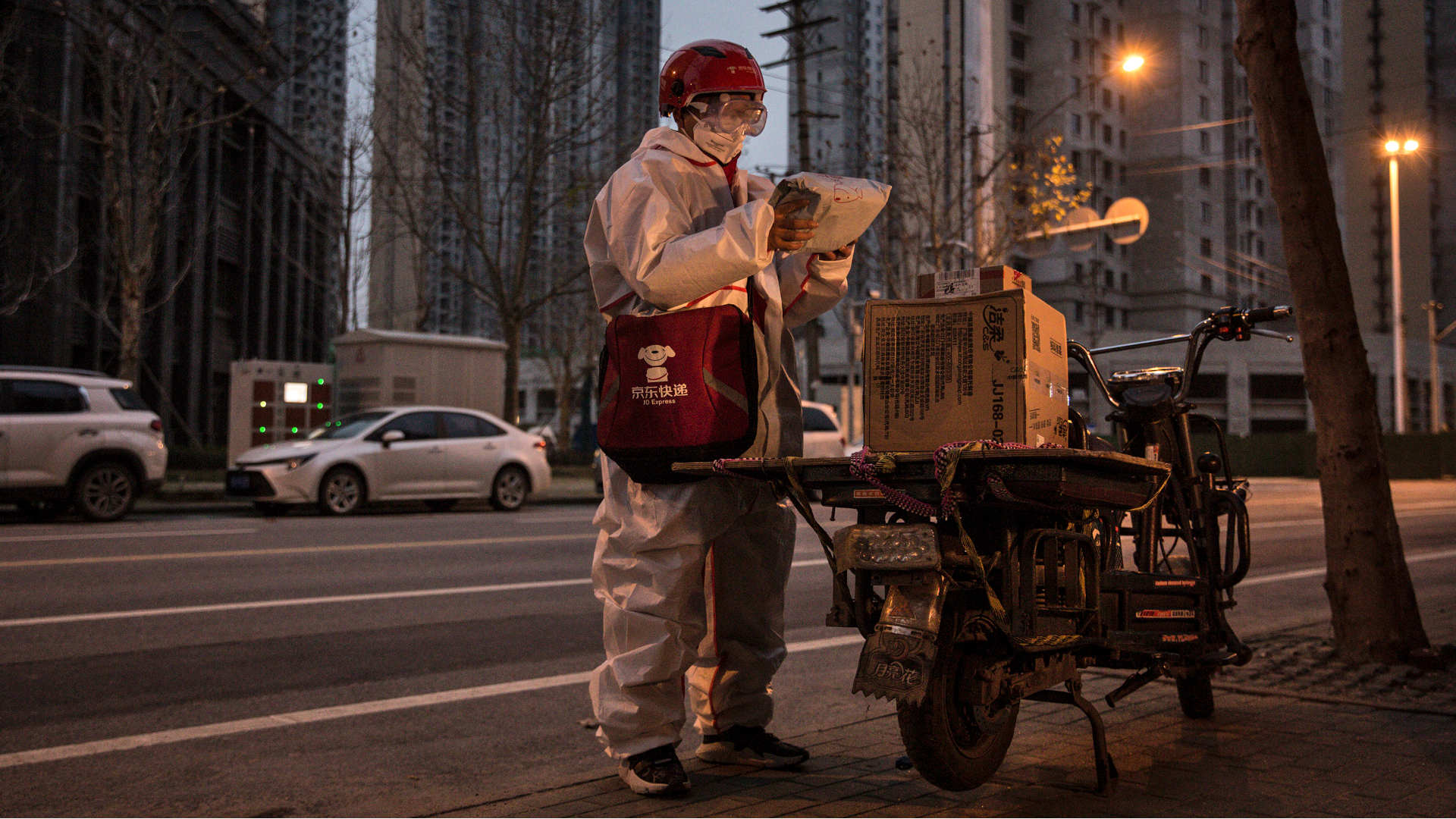Interview: What We Can Learn From Loneliness Research
Michelle Parsons traces her interest in loneliness back to the dissolution of the Soviet Union in 1991. Parsons, who teaches at Northern Arizona University and describes herself a sociocultural medical anthropologist, was interested in how the collapse of Communism — a system that had held sway for more than seven decades — had affected people’s health. Why, for example, was there a spike in mortality among middle-aged people who had grown up under the old system and were now experiencing massive societal change?
“So I talked to that generation of Russians, based in Moscow, for a year, and tried to understand why that time was so life-threatening,” Parsons said. “And they spoke a lot about being unneeded, and not having things to offer other people anymore.”
Recently, the problem of loneliness has received increased attention, with the U.S. Surgeon General, Vivek Murthy, describing loneliness this spring as a public health crisis, and even an epidemic. And with loneliness comes negative health outcomes. As the U.S. Department of Health and Human Services has put it: “Disconnection fundamentally affects our mental, physical, and societal health.”
Back in 2018, the United Kingdom appointed its first minister for loneliness. Not long after, the Covid-19 pandemic further increased levels of loneliness, with the American Psychological Association noting that the effects “could have implications for people’s long-term mental and physical health, longevity and well-being.”
For Parsons, a key finding in recent research is that there’s much more to loneliness than merely being alone.
Our interview was conducted over Zoom and by email, and has been edited for length and clarity.
Undark: I think many of us felt lonely during the pandemic, in part because we couldn’t be with our friends or attend events in person — but there’s obviously more to it than that. What are some of the other ways in which the pandemic caused loneliness?
Michelle Parsons: I’ve been working with data from an online journaling project called the Pandemic Journaling Project. That was created by anthropologist Sarah Willen and Katherine Mason. They have journal entries from people all over the world; more than 55 countries have participated. And I was interested in U.S. participants, adults 25 to 64 years of age, and their journal entries.
So, looking for journal entries that mentioned loneliness — “lonely” or “alone” or “loneliness” — those key terms, I found that they’re not really talking about family and friends so much. And they’re not really talking about close relationships, because during the pandemic, we still had access to those, although in an attenuated form; we could Zoom with people.
They were talking about strangers and casual acquaintances, and they were talking about places that they missed and practices that they missed. So, for example, a journaler would say, “I just want to go browse books at the library, but the library’s closed,” or “I just want to sit in a cafe with people around me.” So not necessarily any deep or meaningful social interaction as we tend to think of it — a close relationship — but just these casual relationships that we have in public places.
UD: It sounds like loneliness is about more than merely being alone, or being apart from friends and family. Based on your research, how might the definition of loneliness be broadened?
MP: Loneliness is already recognized as different from social isolation. So instead of social isolation, many psychologists, and others who have written about loneliness, define it as perceived social isolation — so that you could be surrounded by people but still feel lonely, if you perceive that you are socially isolated.
So there’s that distinction. In terms of my own work — the anthropology of loneliness, so expanding beyond psychological or cognitive conceptions of loneliness — I think it would be important to think beyond relationships between people, but relationships between people and places, relationships between people and practices, and also relationships between people and nonhumans. So animals, for example.
UD: I’m thinking back to 2020, that first wave, when you could go to city parks, but the playgrounds were roped off; children couldn’t play together. Or the washrooms were closed. So the experience of going to the park was just very different from what people were used to.
MP: You’re right, places also changed during the pandemic. And people mourned the places that they remember, so people would say things like, “The streets of Manhattan are so dead,” or “My workplace is like a ghost town now.” Or, like you said, “I miss the sound of children playing in the park.”
UD: Do the tools that psychologists or other professionals use to measure loneliness need to be adjusted to reflect these broader definitions? I’m wondering what types of loneliness the current measures might miss.
MP: Definitely. The current measures are not picking up on places and practices. And they’re not really even picking up on interactions with strangers or casual acquaintances. These kinds of people are known in the literature as “weak ties” or “nodding relationships” or “consequential strangers.”
Those kinds of relationships are missing. For example, a loneliness scale would ask, “There are plenty of people I can rely on when I have problems” or “There are many people I can trust completely,” and “There are enough people I feel close to.” So they’re picking up on close relationships, but not so much about casual relationships, and definitely not places and practices.
UD: Can you say a bit more about the interactions we have with strangers or with casual acquaintances, and why they matter?
MP: For a while now, researchers have noted the importance of casual acquaintances in our lives. Gillian Sandstrom and Elizabeth Dunn report that minimal social interactions with strangers may provide cues of belonging and increase well-being. Karen Fingerman writes of the importance of consequential strangers in connecting us to larger social structures.
Pandemic journalers wrote about missing casual acquaintances and strangers, at the gym, in stores, in bars, or on the street. Why do these seemingly banal social connections matter? One possibility is the novelty and social stimulation they introduce in our lives, expanding our social world.
UD: What role can communities, or even states, play in reducing loneliness?
MP: If you think about entering this through places and practices, you can see that there would be potential for intervention in urban planning, in architectural design. Recently, I spoke to a student doing a project in interior design, and thinking about even how the design of a living space for young professionals could foster connections. So what would that look like?
I think it’s possible to think about this on many different levels. In terms of places, like already mentioned, urban planning. In terms of practices, I think about community events, so the type of events where people who don’t necessarily know each other or would not necessarily interact in other ways, are brought together. And they might have just fleeting interactions there.
But I think that’s still important for their sense of belonging to a larger social unit of people that they might not ever encounter again, or have a close relationship to, but they did have this meeting. So you can think of festivals in terms of public events; you can think about open markets; you can think about public parks in which sporting events are held. So all these kinds of practices in places which bring disparate people together.
UD: Is there evidence that that loneliness is becoming more of a problem? Or is it possible that it’s just our awareness of the issue that’s growing?
MP: I think it is likely that both of these are happening. Attention to loneliness has grown, especially in the last 10 years. Although psychologists have written about loneliness since at least the 1950s, there is now more research, and more research in other disciplines such as geography and anthropology.
It is possible that loneliness has always been a problem and we are just paying more attention now. Some research on the prevalence of loneliness over time, however, suggests loneliness may be increasing. A recent meta-analysis of studies across countries suggests loneliness has increased in young adults since the 1970s, a phenomenon the authors attribute to mobility, technology, and the fragmentation of social relations.
I think it is fair to say that we need more evidence from more areas of the world to understand both current prevalences of loneliness and changes over time.
UD: What do we know about how holidays — like Thanksgiving or Christmas, for example — affect feelings of loneliness?
MP: One thing that is clear from pandemic journal entries on loneliness is that loneliness is not a static characteristic of the individual but rather a fluctuating one. The same individual who reports feeling lonely one week, may not feel lonely the next week.
Pandemic journalers wrote about feeling especially lonely when they could not celebrate birthdays and holidays with family and friends. I think this illustrates both that loneliness fluctuates, sometimes day to day, and that loneliness is influenced by cultural expectations.
If the cultural expectation is that birthdays and holidays are celebrated with others, then not being able to do so may be particularly lonely.











